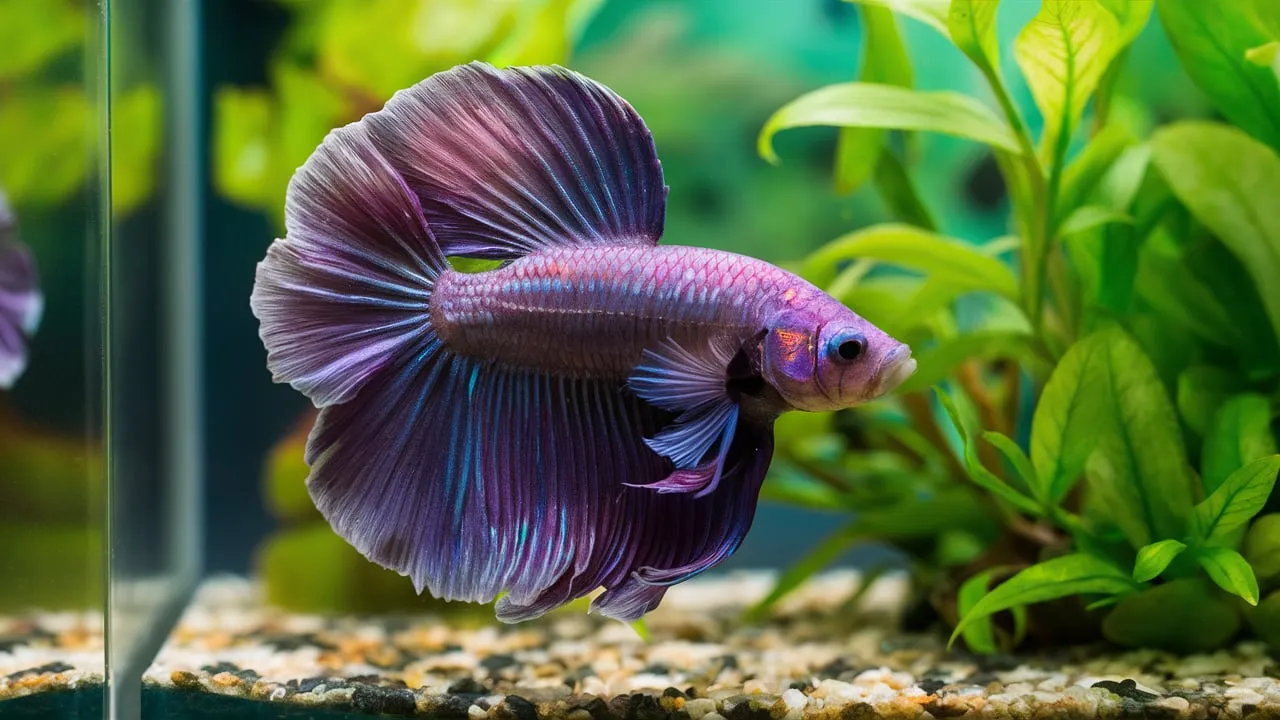Betta fish, also known as Siamese fighting fish, are a popular choice for both beginner and experienced aquarium enthusiasts. While male bettas are often the center of attention due to their vibrant colors and aggressive behaviors, female betta fish can be just as captivating and rewarding to care for. In this comprehensive guide, Betta Fish Tips will explore the unique needs and care requirements of female betta fish, providing you with the knowledge to ensure your underwater companion thrives.

Understanding Female Betta Fish
Female betta fish, or “sorority” bettas, are generally smaller and less aggressive than their male counterparts. They typically have a more subdued coloration, with shades of blue, red, and green being the most common. Unlike male bettas, which are known for their dramatic fin displays and territorial behavior, female bettas are generally more docile and can often be kept in small groups, or “sororities,” if the tank conditions are appropriate.
Habitat and Tank Requirements
When it comes to housing female betta fish, it’s important to provide them with a spacious and well-designed aquarium. The minimum tank size for a single female betta is typically 2.5 gallons, but a larger tank, around 5 gallons or more, is recommended if you plan to keep a sorority of 3-5 females. The tank should be well-planted, with a variety of hiding spots and smooth decorations to create a natural and comfortable environment.
Filtration and Water Quality
Maintaining high water quality is crucial for the health and well-being of female betta fish. A reliable filtration system, such as a sponge filter or a small hang-on-back filter, is essential to keep the water clean and free of harmful toxins. Regular water changes, around 25-50% per week, are recommended to ensure the water parameters remain within the optimal range for betta fish.
Feeding and Diet
Female betta fish are omnivorous and require a balanced diet to thrive. A high-quality betta-specific pellet or flake food should be the foundation of their diet, supplemented with occasional treats such as freeze-dried or frozen brine shrimp, bloodworms, or daphnia. It’s important to feed your female betta a small amount of food, 2-3 times per day, and to avoid overfeeding, which can lead to health issues.
Tank Mates and Compatibility
While female betta fish can be kept in small groups, it’s essential to choose tank mates carefully. Suitable tank mates for female bettas include small, peaceful community fish, such as corydoras catfish, tetras, and rasboras. Avoid aggressive or large fish that may nip at the betta’s fins or compete for resources.
Health and Common Diseases
Like any aquarium inhabitants, female betta fish can be susceptible to various health issues. Common problems include fin rot, ich (white spot disease), and swim bladder disorder. Maintaining optimal water quality, providing a stress-free environment, and promptly addressing any signs of illness are crucial for keeping your female betta healthy and thriving.
Can You Explain The Signs Of Stress In Female Betta Fish?
Here are the common signs of stress in female betta fish:
- Fin clamping: When a betta fish is stressed, their fins will appear tightly clamped against their body, rather than being spread out and flowing naturally.
- Hiding behavior: Stressed bettas may spend a lot of time hiding in plants, decorations, or the corners of the tank, trying to avoid interactions.
- Loss of appetite: Stressed bettas may refuse to eat or show little interest in their food.
- Erratic swimming: Stressed bettas may dart around the tank or swim in an uncoordinated, frenzied manner.
- Pale coloration: The vibrant colors of a healthy betta may fade or become dull when the fish is stressed.
- Flaring (aggressively): Some stressed bettas may flare their gills and fins in an aggressive display, even when no other fish are present.
- Rapid breathing: Stressed bettas may exhibit rapid or labored gill movements, indicating increased respiratory rate.
- Nipping fins: In a tank with other fish, a stressed betta may start nipping at the fins of its tankmates.
It’s important to identify and address the source of stress, such as water quality issues, tank size, or inappropriate tank mates, to help the female betta fish thrive. Providing a calm, stable environment and appropriate care can help reduce stress and promote the overall health and well-being of the fish.
Conclusion
Female betta fish can make wonderful additions to any aquarium, offering a more subdued yet equally captivating presence. By understanding their unique care requirements, providing them with a suitable habitat, and meeting their dietary and social needs, you can ensure your female betta fish lives a long, healthy, and happy life. With the right information and dedication, you can create a thriving underwater ecosystem that showcases the beauty and grace of these delightful aquatic companions.

Bài viết liên quan
Introduction To Betta Fish Species
Betta fish, also known as Siamese fighting fish, are a popular choice among aquarium enthusiasts [...]
Jul
Understanding Types Of Neocaridina Shrimp
Neocaridina shrimp are a captivating group of freshwater crustaceans that have become increasingly popular among [...]
Jul
Understanding Fancy Goldfish Types
Goldfish, with their vibrant colors and graceful movements, have captivated the hearts of aquarium enthusiasts [...]
Jul